Verdi Railroad water story
In the old days, Acmeville was a small town fed from one well behind the grocery store on Main Street. Steam engines got water for their boilers directly from the river. The copper mines, now abandoned, brought the railroad to the region. Later, the town set up a pump station (now Ramon’s Cantina) next to the river to pump water into a tank for steam engines, and then the well was abandoned.
More recently… the water works moved down river. No need to replenish steam engines since the railroads have converted to diesel. Now the town represents late ‘50s/early ‘60s with booming Plasticville manufacturing, several railroads and a fledgling airport.
The plant connection… throughout its history Acmeville depended on the river for life. Although the mines brought the railroad, the river made the town livable… water… steam engines… town and flora flourishing. In a water-challenged state, the living scenery on the Verdi Railroad can depend on unseen gigantic water cisterns, filled from our 1:1 roof gutters during the rainy season.
2-D backdrop
We got the idea to use shade-cloth murals to hide our fence by volunteering at the Bay Area’s Roving Garden Railroad, where shade-cloth murals hide the trailer tongue. Wrapping the top edge of the fabric around a narrow board, we screwed the cloth to the very top of the fence and stretched it over a frame around the corner. I outlined the mountain peaks and began to paint, surprised at the large amount of paint necessary to get color to show up. Fabric just wicks the paint inside. I recommend using a high-quality paint and long bristled paintbrushes that hold a lot of paint. Even better is gathering a fair amount of paint on a painting knife to push the paint on the fabric. The knife edge works great for making vertical trees as well. We used recycled black shade cloth making sure to use the smoother “knit” side, not the opposite “purl” side. A curved upholstery needle and nylon thread stitched up our seams.





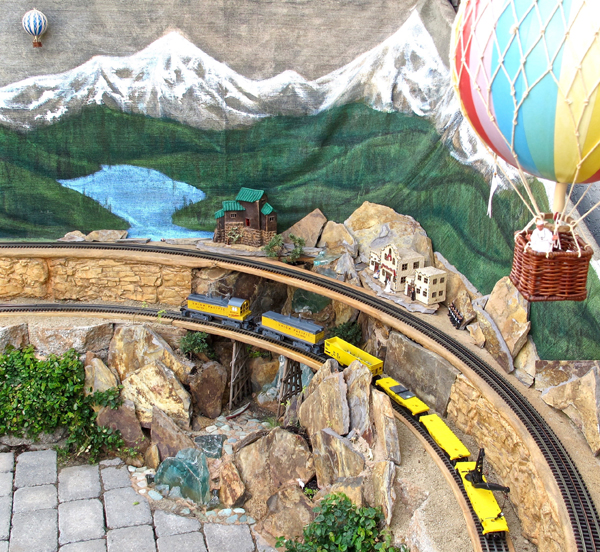
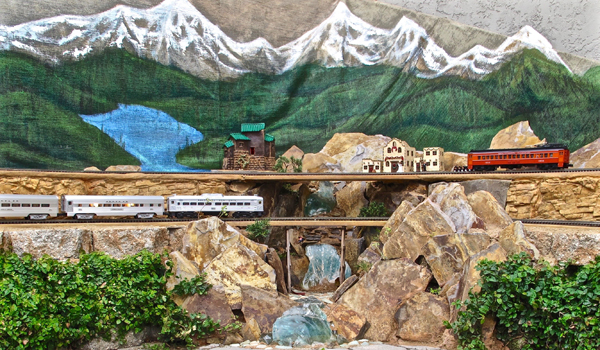

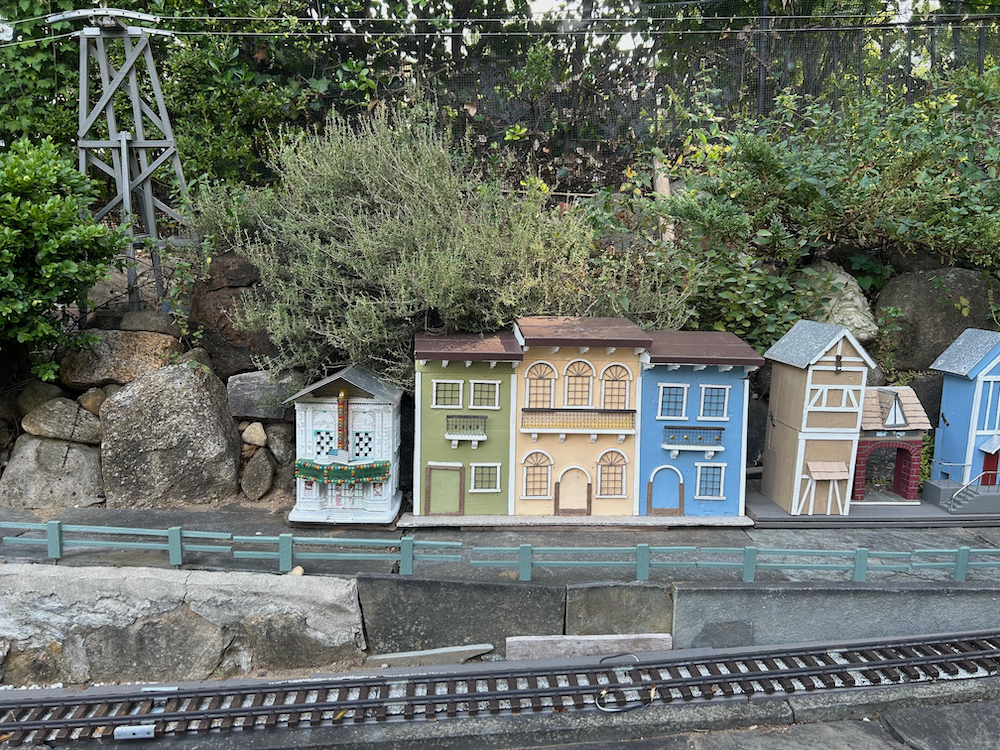
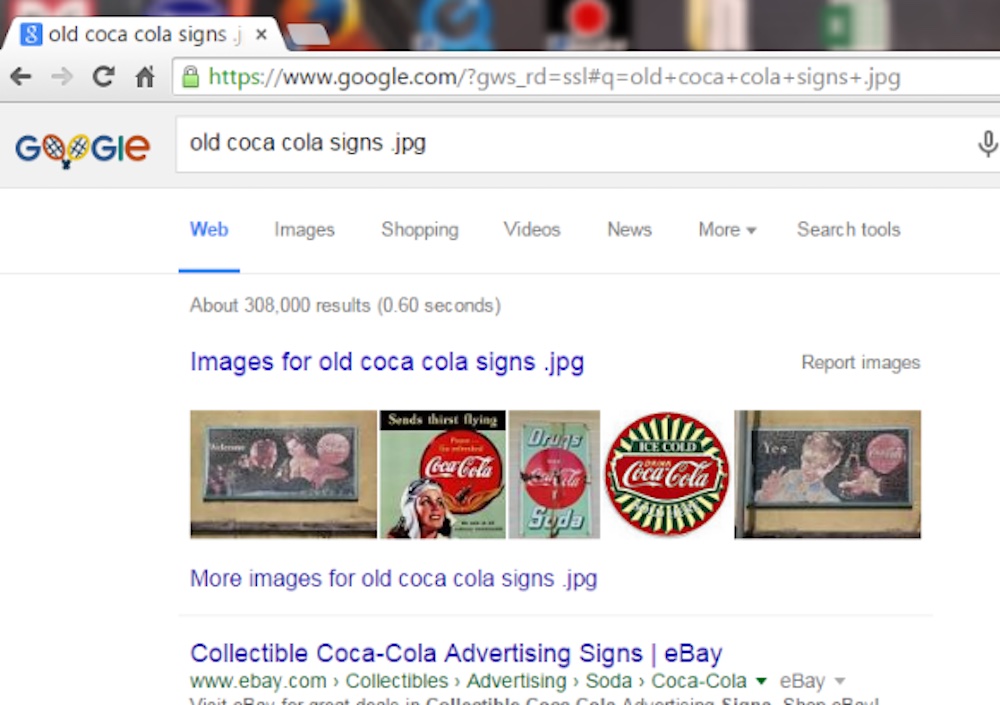
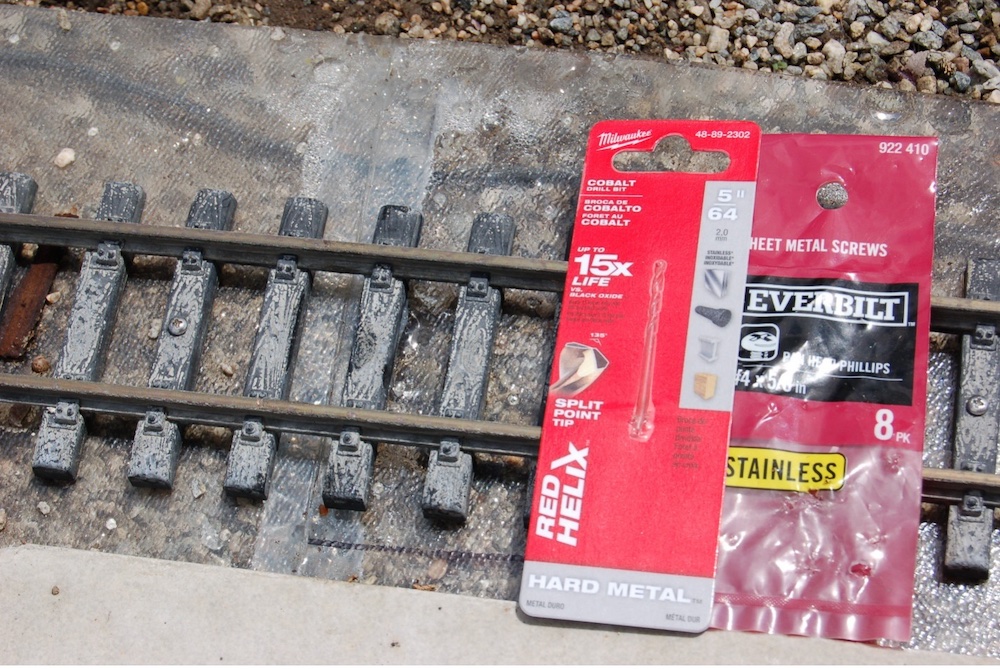
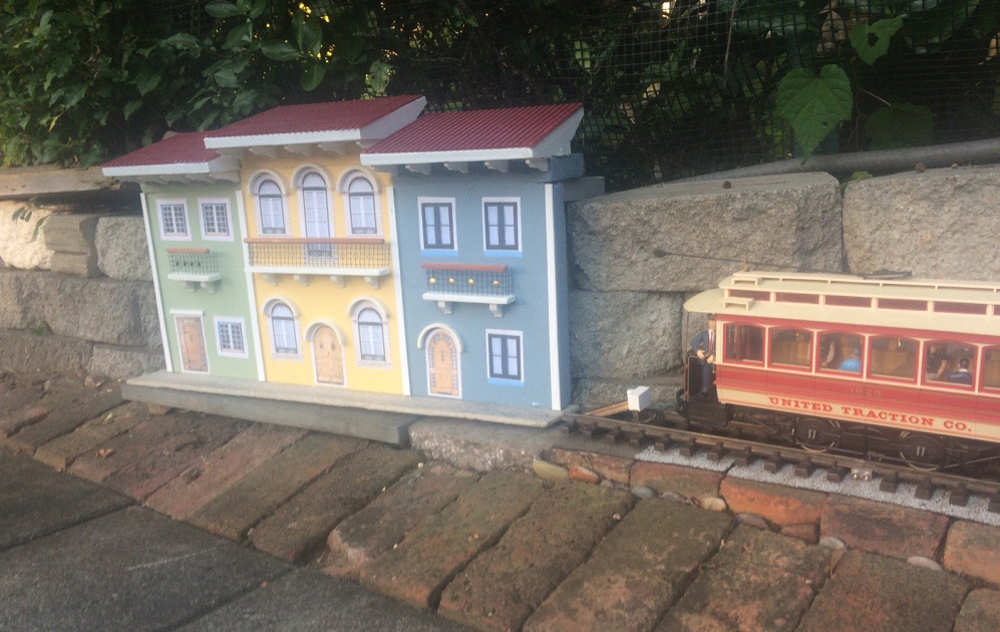




I think what’s very amazing is how there’s so much history in some of these recreated scenes. It’s more than just a train pulling some important cargo in storage from one place to another, but what happened at each stop and what kind of transactions and interactions happened because of this way of commuting and carrying commerce from town to town. It’s really quite intriguing if you think about it because the various industrial storage units for different materials all come together somehow on those tracks…